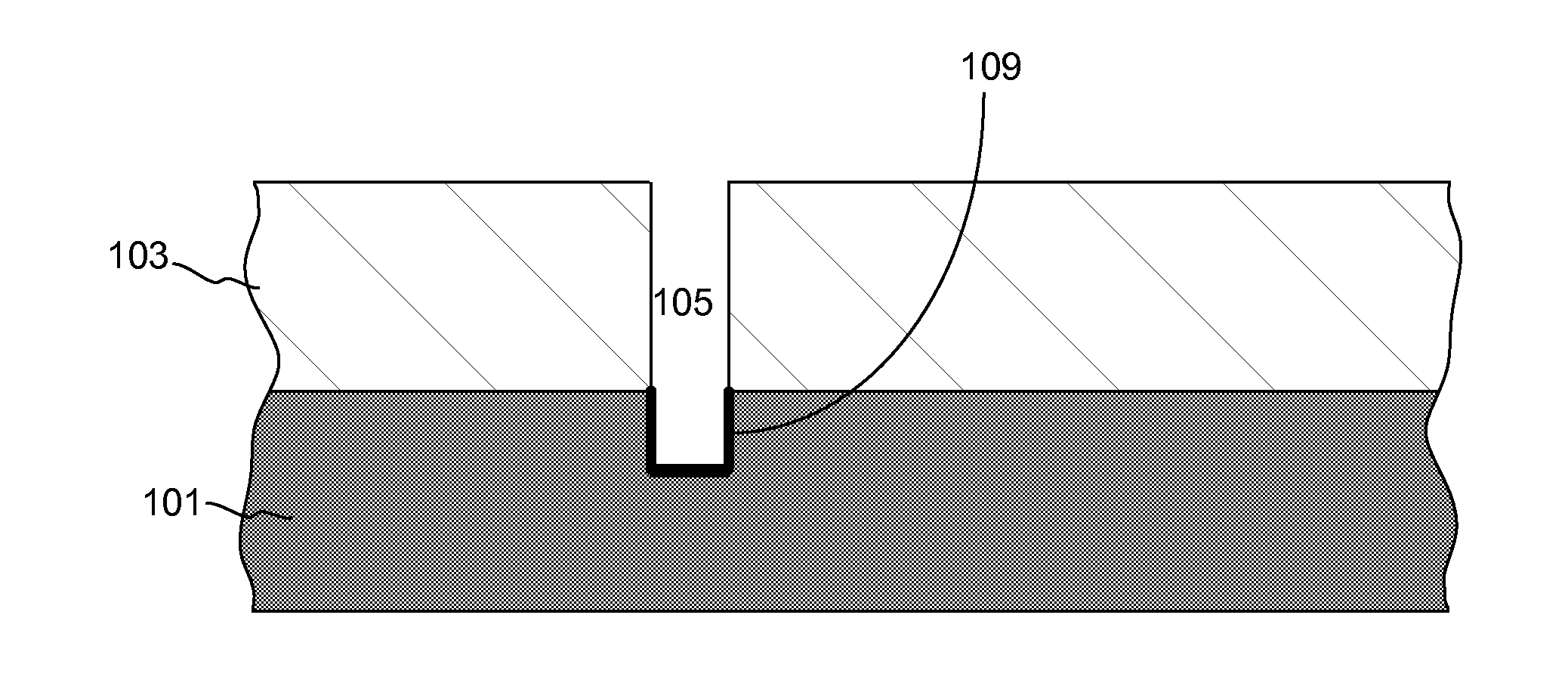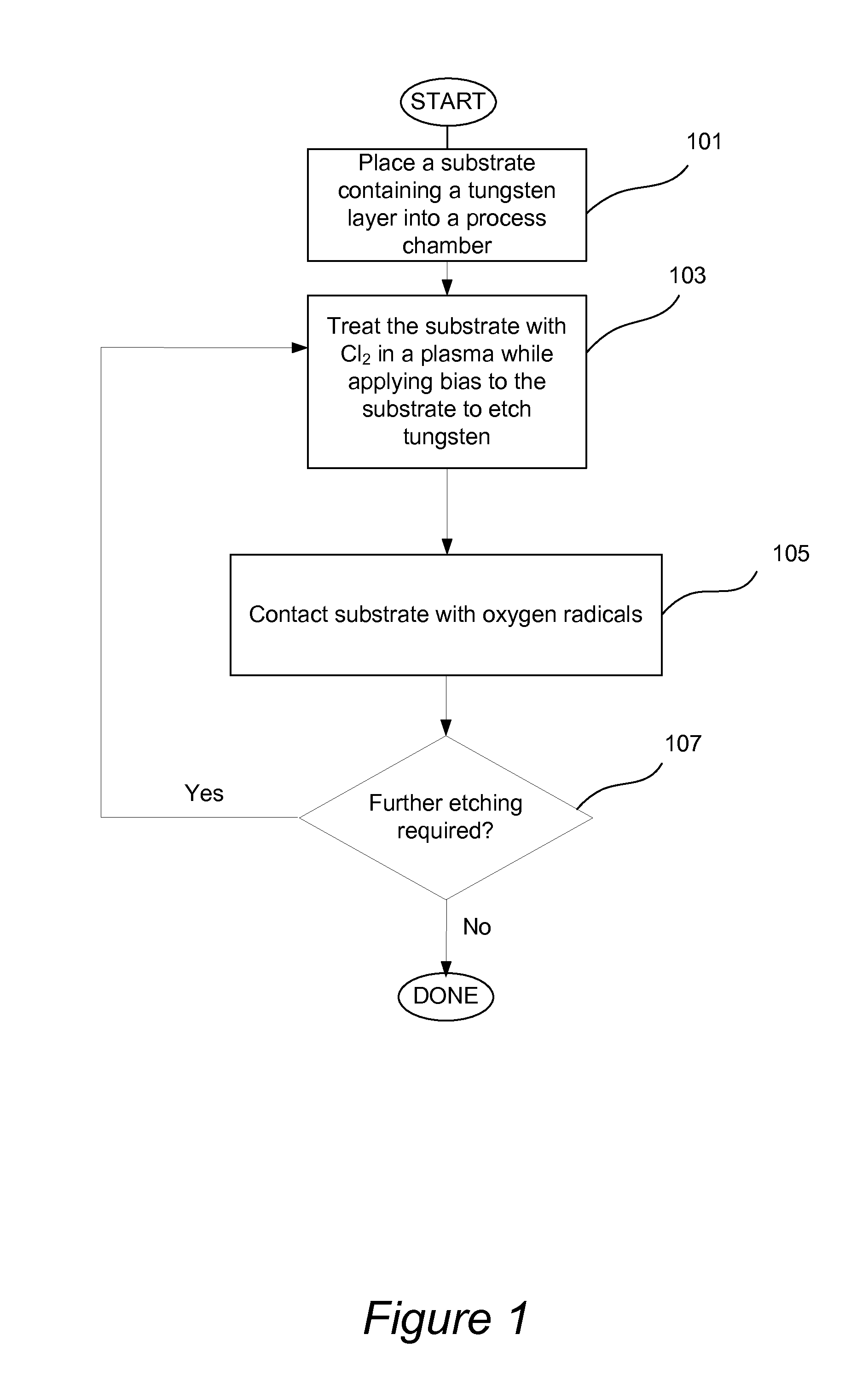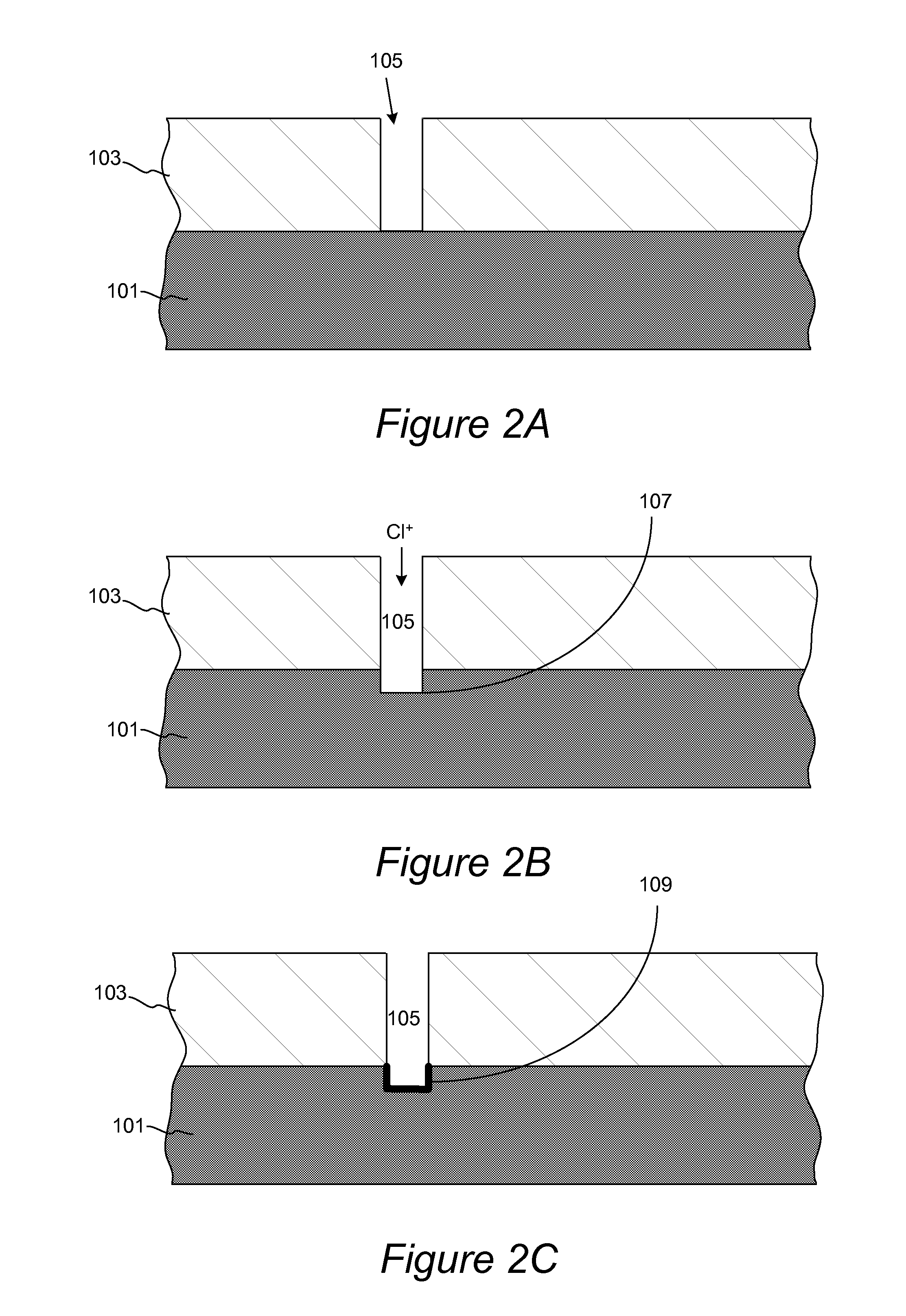Method and apparatus for anisotropic tungsten etching
a technology of anisotropic tungsten and tungsten, which is applied in the direction of electrical equipment, basic electric elements, electric discharge tubes, etc., can solve the problem of limited methods of tungsten etching
- Summary
- Abstract
- Description
- Claims
- Application Information
AI Technical Summary
Benefits of technology
Problems solved by technology
Method used
Image
Examples
example
[0052]In an experimentally validated example a substrate including an array or matrix of recessed features was provided. The recessed features had an aspect ratio of 10:1 and width of 27 nm. The recessed features were made in a silicon oxide material and had an exposed layer of tungsten at the bottom of recessed features. Tungsten was etched in the Kiyo FX apparatus available from Lam Research Corporation. The substrate was placed into the process chamber and Cl2 was provided to the process chamber at a flow rate of 100 sccm. The plasma was formed by providing a power of 300 W to the 13.56 MHz ICP excitation source, and by providing a 1500 V RF bias to the substrate holding chuck. The bias was applied in pulses with a 10% duty cycle. The timing diagram for bias pulsing is schematically illustrated in FIG. 4. The substrate was treated with Cl2 in a plasma for 12 seconds at a pressure of 5 mTorr and a temperature of 70° C. (referring to a temperature at the substrate holder). Next, th...
PUM
| Property | Measurement | Unit |
|---|---|---|
| diameter | aaaaa | aaaaa |
| thickness | aaaaa | aaaaa |
| widths | aaaaa | aaaaa |
Abstract
Description
Claims
Application Information
 Login to View More
Login to View More - R&D
- Intellectual Property
- Life Sciences
- Materials
- Tech Scout
- Unparalleled Data Quality
- Higher Quality Content
- 60% Fewer Hallucinations
Browse by: Latest US Patents, China's latest patents, Technical Efficacy Thesaurus, Application Domain, Technology Topic, Popular Technical Reports.
© 2025 PatSnap. All rights reserved.Legal|Privacy policy|Modern Slavery Act Transparency Statement|Sitemap|About US| Contact US: help@patsnap.com



